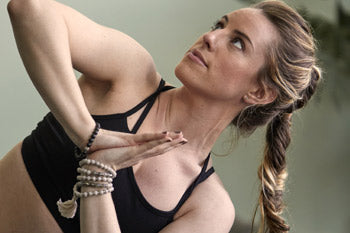How to Overcome the Death of a Loved One

by: E.C. LaMeaux
Losing a loved one can be a highly charged and very traumatic time. Though coping with loss can be a deeply personal experience, there are a few basic and universal steps to the bereavement and grief process. Knowing these steps can help you to work through your grief over the loss of a loved one.
Step 1: Allow the feelings
Coping with the loss of a loved one brings up almost every emotion imaginable. There are times when more than one emotion seems to take hold at once, and you may feel as if you're “going crazy.” It's natural to feel this way, as it's normal to experience a number of different feelings.
Gently remind yourself in your time of bereavement and grief that your feelings are yours, and they are well within the norm. It's important to your process to understand that there is no "right" or "wrong" when it comes to your feelings about losing a loved one.
Step 2: Gather support
While there may be times as you are coping with loss when you'll wish to be alone, it's important to gather a support group around you for those times when you might need them. Friends, family, a minister or rabbi, and perhaps a therapist are all people who can and should be accessed during your grief process. These individuals can be a source of emotional support as well as physical needs, if required. The death of a loved one often leaves a large hole in the life of the survivor that can be, at least temporarily, occupied by a support team.
Step 3: Allow the grieving process
Bereavement and grief is a process. It's important to know that every person has their own way of coping with loss. You cannot put a time limit on your grief. You must allow yourself to experience the stages of grief as they come up.
Elisabeth Kubler-Ross, in her book, On Death and Dying, outlined five stages of grief. Each stage is unique and is not necessarily experienced in order. Stages may also be revisited. These stages are:
- Denial: Your experience is incomprehensible, initially. You find it impossible to believe the loss of your loved one is real, and you may be numb from the experience.
- Anger: As the truth of the situation begins to take hold, it's normal to feel anger and rage. This anger may be directed at yourself, the loved one for leaving you, doctors for not healing your loved one or even at God.
- Bargaining: It's not unusual for survivors to cope with loss by trying to negotiate, usually with their higher power. Don't be surprised if you find yourself trying to make an “if only” deal with God.
- Depression: The overwhelming sadness you feel is normal, and in most cases will not last forever. It's common to feel as if life will never be the same.
- Acceptance: While this final stage of bereavement and grief is called “acceptance,” this refers to coming to terms with the finality of the loss and moving forward with your life. It does not mean that, from time to time, you may not revisit some of the stages listed above, but rather that the pain of your loss will become more manageable.
Step 4: Embrace life
Author David K. Switzer talks about the need to rediscover one’s own life in his book Dynamics of Grief: Its Source, Pain, and Healing. While the pain of your loss is real and must be felt, there will come a time when you must begin to live your own life again. By working through overcoming the death of a loved one, you will come to a place of accepting the death as a reality. You will find yourself able to move forward and embrace your life without your loved one by your side.
Your process through bereavement and grief are your own. Everyone responds differently to coping with loss. Above all, be kind to yourself and know that you will wake one day and find the pain is less, and life can go on.
Also in Blog

Body Peace & Personal Empowerment

Yoga for Swimmers: Poses for Strength and Mobility







